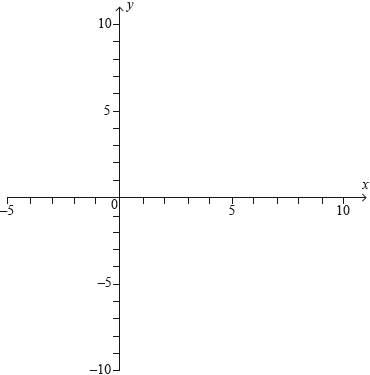| Date | November 2021 | Marks available | 3 | Reference code | 21N.3.AHL.TZ0.1 |
| Level | Additional Higher Level | Paper | Paper 3 | Time zone | Time zone 0 |
| Command term | Find | Question number | 1 | Adapted from | N/A |
Question
In this question you will explore some of the properties of special functions and and their relationship with the trigonometric functions, sine and cosine.
Functions and are defined as and , where .
Consider and , such that .
Using , find expressions, in terms of and , for
The functions and are known as circular functions as the general point () defines points on the unit circle with equation .
The functions and are known as hyperbolic functions, as the general point ( ) defines points on a curve known as a hyperbola with equation . This hyperbola has two asymptotes.
Verify that satisfies the differential equation .
Show that .
.
.
Hence find, and simplify, an expression for .
Show that .
Sketch the graph of , stating the coordinates of any axis intercepts and the equation of each asymptote.
The hyperbola with equation can be rotated to coincide with the curve defined by .
Find the possible values of .
Markscheme
A1
A1
AG
[2 marks]
METHOD 1
substituting and M1
(M1)
A1
AG
METHOD 2
M1
M1A1
AG
Note: Accept combinations of METHODS 1 & 2 that meet at equivalent expressions.
[3 marks]
substituting into the expression for (M1)
obtaining (A1)
Note: The M1 can be awarded for the use of sine and cosine being odd and even respectively.
A1
[3 marks]
substituting and attempt to simplify (M1)
A1
[2 marks]
METHOD 1
substituting expressions found in part (c) (M1)
A1
METHOD 2
M1
A1
Note: Accept equivalent final answers that have been simplified removing all imaginary parts eg etc
[2 marks]
M1
A1
A1
Note: Award A1 for a value of 1 obtained from either LHS or RHS of given expression.
M1
(hence ) AG
Note: Award full marks for showing that .
[4 marks]
A1A1A1A1
Note: Award A1 for correct curves in the upper quadrants, A1 for correct curves in the lower quadrants, A1 for correct -intercepts of and (condone and ), A1 for and .
[4 marks]
attempt to rotate by in either direction (M1)
Note: Evidence of an attempt to relate to a sketch of would be sufficient for this (M1).
attempting to rotate a particular point, eg (M1)
rotates to (or similar) (A1)
hence A1A1
[5 marks]


